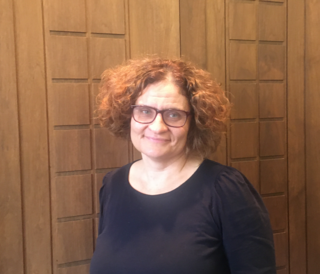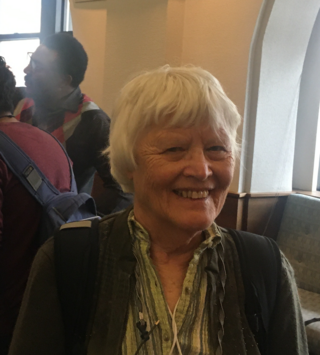Related Research Articles

Gertrude Mary Cox was an American statistician and founder of the department of Experimental Statistics at North Carolina State University. She was later appointed director of both the Institute of Statistics of the Consolidated University of North Carolina and the Statistics Research Division of North Carolina State University. Her most important and influential research dealt with experimental design; In 1950 she published the book Experimental Designs, on the subject with W. G. Cochran, which became the major reference work on the design of experiments for statisticians for years afterwards. In 1949 Cox became the first woman elected into the International Statistical Institute and in 1956 was President of the American Statistical Association.

David Harold Blackwell was an American statistician and mathematician who made significant contributions to game theory, probability theory, information theory, and statistics. He is one of the eponyms of the Rao–Blackwell theorem. He was the first African American inducted into the National Academy of Sciences, the first African American full professor at the University of California, Berkeley, and the seventh African American to receive a Ph.D. in mathematics. In 2012, President Barack Obama posthumously awarded Blackwell the National Medal of Science.

Mary Lee Wheat Gray is an American mathematician, statistician, and lawyer. She is the author of books and papers in the fields of mathematics, mathematics education, computer science, applied statistics, economic equity, discrimination law, and academic freedom. She is currently on the Board of Advisers for POMED and is the chair of the Board of Directors of AMIDEAST.

Xihong Lin is a Chinese–American statistician known for her contributions to mixed models, nonparametric and semiparametric regression, and statistical genetics and genomics. As of 2015, she is the Henry Pickering Walcott Professor and Chair of the Department of Biostatistics at Harvard T.H. Chan School of Public Health and Coordinating Director of the Program in Quantitative Genomics.
Rosedith Sitgreaves Bowker was an American statistician who taught at Columbia University and Stanford University. Her publications included research on random matrices and Kendall's W.

Beatrice Aitchison was an American mathematician, statistician, and transportation economist who directed the Transport Economics Division of the United States Department of Commerce, and later became the top woman in the United States Postal Service and the first policy-level appointee there.
Arlene Sandra Ash is an American statistician who works on risk adjustment in health services. She is a professor of Quantitative Health Sciences in the University of Massachusetts Medical School, and chief of the Biostatistics and Health Services Research division there.
Shili Lin is a statistician who studies the applications of statistics to genomic data. She is a professor of statistics at Ohio State University, and is president-elect of the Caucus for Women in Statistics.
Gladys H. Reynolds is an American statistician who did pioneering research on modeling sexually transmitted diseases. She worked for many years at the Centers for Disease Control and Prevention (CDC), was the first female chief of a CDC statistics branch, and the first statistician to serve in that role.

Elizaveta (Liza) Levina is a Russian and American mathematical statistician. She is the Vijay Nair Collegiate Professor of Statistics at the University of Michigan, and is known for her work in high-dimensional statistics, including covariance estimation, graphical models, statistical network analysis, and nonparametric statistics.
Juliet Popper Shaffer is an American psychologist, statistician and statistics educator known for her research on multiple hypothesis testing. She is a teaching professor emerita at the University of California, Berkeley.
Dorothy Morrow Gilford was an American statistician who headed the Division of Mathematical Sciences at the Office of Naval Research, the National Center for Education Statistics, and the Conference Board of the Mathematical Sciences. She was the editor of The Aging Population in the Twenty-First Century: Statistics for Health Policy.
Kathryn M. Roeder is an American statistician known for her development of statistical methods to uncover the genetic basis of complex disease and her contributions to mixture models, semiparametric inference, and multiple testing. Roeder holds positions as professor of statistics and professor of computational biology at Carnegie Mellon University, where she leads a project focused on discovering genes associated with autism.

Nancy Flournoy is an American statistician. Her research in statistics concerns the design of experiments, and particularly the design of adaptive clinical trials; she is also known for her work on applications of statistics to bone marrow transplantation, and in particular on the graft-versus-tumor effect. She is Curators' Distinguished Professor Emeritus of Statistics at the University of Missouri.
Carol Anne Gotway Crawford is an American mathematical statistician and from 2018 to 2020 served as Chief Statistician of the U.S. Government Accountability Office (GAO). She joined the GAO in May 2017. From August 2014 to April 2017, she was with the Department of Agriculture's National Agricultural Statistics Service. She was formerly at the National Center for Environmental Health of the Centers for Disease Control and Prevention. She also holds an adjunct faculty position at the Rollins School of Public Health of Emory University, and is an expert in biostatistics, spatial analysis, environmental statistics, and the statistics of public health. She also maintains an interest in geoscience and has held executive roles in the International Association for Mathematical Geosciences.
Amanda L. Golbeck is a statistician, social scientist, and academic leader. She is known for her book, Leadership and Women in Statistics, and her book on Elizabeth L. Scott, Equivalence: Elizabeth L. Scott at Berkeley. She is known for her pioneering definition of health numeracy.
Joan B. Garfield is an American educational psychologist specializing in statistics education. She is retired from the University of Minnesota as a professor emeritus of educational psychology.
Rebecca Allana Hubbard is an American biostatistician whose research interests include observational studies and the use of electronic health record data in public health analysis and decision-making, accounting for the errors in this type of data. She is a professor of biostatistics at the Brown University School of Public Health.
Peter Guttorp is a statistician, born in Sweden, with most of his career in the United States. He is a professor emeritus at the University of Washington and professor at the Norwegian Computing Center. Most of his work is in stochastic modeling of scientific data in hematology, geosciences, and climatology, with particular focus on spatial and spatio-temporal approaches. He has also worked in the history of statistics.
Tanya Pamela Garcia is a Peruvian-American biostatistician whose research applies robust statistics to understand the progression of neurodegenerative diseases including Huntington's disease, and to classify gut microbiota. She is an associate professor of biostatistics in the UNC Gillings School of Global Public Health in Chapel Hill, North Carolina. She is the 2025 chair of the Biometrics Section of the American Statistical Association.
References
- 1 2 Perry, Nick (March 2, 2010), "UW class tackles helium-filled football challenge", Seattle Times
- 1 2 Massey, Matt (May 4, 2006), "Hale junior's game grows in Sweden", Prep Beat, Seattle Times
- ↑ Joseph, Nancy (July 1998), A fishy lesson about statistics, University of Washington
- 1 2 "June Morita, Distinguished Teaching Award", Columns, The University of Washington Alumni Magazine, June 1999, retrieved 2017-12-01
- ↑ June Morita at the Mathematics Genealogy Project
- ↑ Agresti, Alan; Meng, Xiao-Li, eds. (2012), Strength in Numbers: The Rising of Academic Statistics Departments in the U. S., Springer, p. 516, ISBN 9781461436492 .
- ↑ ASA Fellows list, American Statistical Association, archived from the original on 2019-11-21, retrieved 2017-11-28
- ↑ ISI Elected Members, Caucus for Women in Statistics, March 29, 2016, retrieved 2017-12-01
- ↑ Individual members, International Statistical Institute, archived from the original on 2017-07-29, retrieved 2017-11-23
- ↑ "Many Honored at Presidential Address, Awards Ceremony", Amstat News, American Statistical Association, October 1, 2009, retrieved 2017-11-28